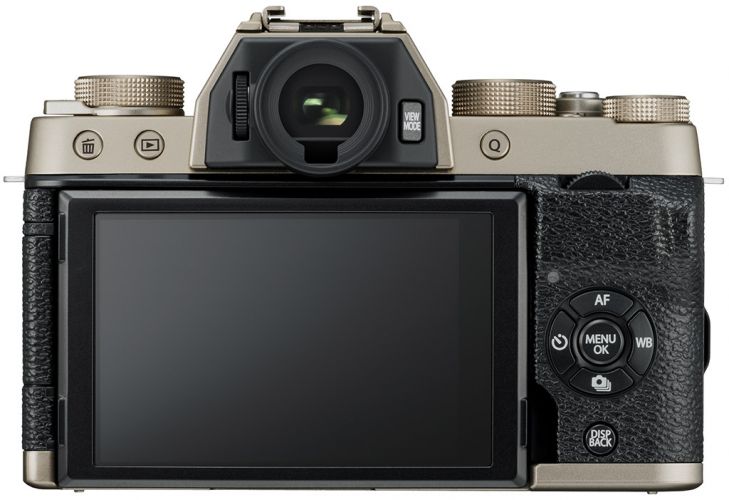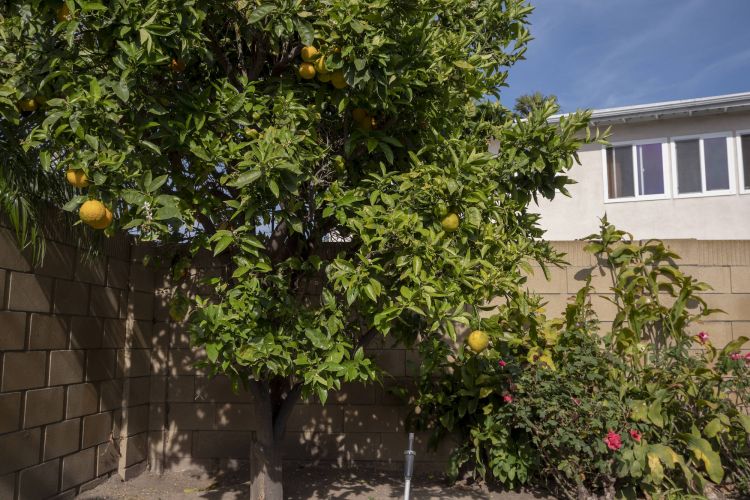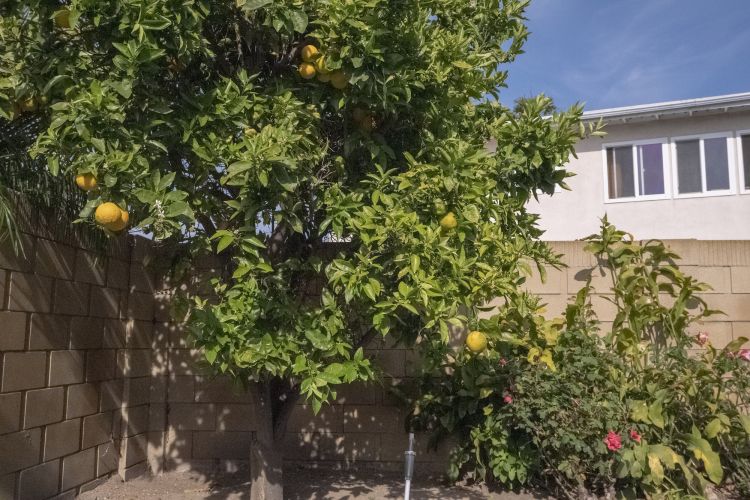
It’s been said the best camera is the one you have with you, which usually means your phone. While plenty of images exist to make a strong argument for the power of iPhone photography, sometimes we want a little more creative control than a phone or even a small point-and-shoot camera can offer. At the same time, we don’t always want to carry around several pounds of gear, especially if we’re just out and about and not on a scheduled shoot.
Enter the X-T100, bringing the style and form factor of the X-T2 and X-T20, but at a lower price point. The Fujifilm X-T100 is a stylish camera that fits somewhere above “beginner” but not quite “high end” within the X Series lineup using a Bayer-filtered APS-C CMOS sensor. While it’s not super fast, it is still an incredible value coming in under $500 for the body with the 15-45mm kit lens.

[REWIND: Fuji X-T20 Review | Oversized Performance In A Pint-Sized Camera]
Technical Specs
- Price Point $499 with 15-45mm Kit lens
- Lens Mount FUJIFILM X
- Camera Format APS-C (1.5x Crop Factor)
- Pixels 24.2 Megapixel
- Maximum Resolution 6000 x 4000
- Kit Lens 3.0x Zoom 15-45mm (22.5-67.5mm eq)
- f/3.5-5.6 to f/22
- Aspect Ratio 1:1, 3:2, 16:9
- Sensor Type CMOS
- Sensor Size 23.5 x 15.7 mm
- Image File Format JPEG, RAW
- Image Stabilization None
- Autofocus 91-area Hybrid AF system
- Shooting Speed 6 frames per second
- Shutter 1/32000 – 30 Seconds
- Video 1080p at 60fps, 4k UHD at 15fps
- ISO Range 200-12,800 Native, expandable to 100-51,200
- Mic Input 2.5mm Sub Mini

Layout

On the top of the body there are three prominent dials. From left to right we start with the Function dial, which by default is assigned to change the film simulations quickly when in P, A, S and M shooting modes, but you can customize this through the menus for other settings like Exposure Comp, Shutter Type, Face/Eye Detection, and more. On the right side, we have the Main Mode dial and the exposure compensation dial; the latter can be changed to several different settings/modes.

On the camera back we have a pretty standard Fuji button layout. One key difference is this camera only has one command dial on the back, which also operates as a Function Button when pressed. Like other Fujifilm cameras, you’ll find a Q button on the back that brings up a grid of 16 user-selectable settings, or a “quick access” menu.
Check out the pricing and availability from our preferred vendors;
Who is it for?
Arguably, this camera places style over substance as the X-T100 seems to be geared more towards the beginner or amature photographer looking to learn in a more analog or manual style, especially with its incredibly small form and vintage design & feel. I found the Autofocus tracking to be a tad underwhelming when there were moving subjects, such as passing cars or athletes on a field, but the image quality more than made up for it. Also, the analog style controls work well to encourage the user to take a more careful and analytical approach to capturing images.

That said, this camera fits into the cheaper entry level camera for someone who wants to learn photography and has a fair bit of patience. It’s also a great “pocket” camera for someone who’s already familiar with Fuji and/or manual systems, seeking something travel-sized for portraits, landscape, or vlogging with quality that still packs a punch.
Lens Compatibility
One of the great things about this camera being a member of the X family is the X-mount system, which lets you use any of the X-series lenses (which we’ll review separately). During this review, I fired a few frames using the 100-400mm and the new 16mm f2.8 lens from Fujifilm. So, even with a cheaper body, you can use and grow into much more professional level lenses within the Fujifilm family.

What’s New?
This system is largely based on the X-A5, which is very similar in features & price. One shift is the X-T100 now has a fully articulating touch screen and has a good sized OLED EVF (borrowed from the X-T20). One thing I immediately thought was the camera would be absolutely great for someone looking to get into Vlogging since you can attach an external mic to the system (which some of the older systems didn’t allow) and the system is very small & lightweight.
Slap this guy on a Gorillapod and you’ve got yourself an instant influencer kit!
Pros
- Great Battery Life (For A Mirrorless System) – In my testing and research from other users, the average lifespan of the batteries for the X-T100 is approximately 430 shots per charge, or about 3-4 full 29.5-minute video clips.
- Fantastic Design – It feels like a retro camera as you’d expect from the Fujifilm family.
- Great Image Quality – Even without it’s sibling’s X-Trans sensor, the 24.2 megapixel sensor gives you a LOT of creative freedom with a pretty wide ISO range (see comparison gallery below).

- Very Useful And Fully Articulating LCD Monitor – 3″ 1.04m-dot LCD Monitor can flip out a full 180-degrees. This feature is great for vlogging, or even just trying to see your image/setup in challenging lighting situations (like bright sun).
- Built-In EVF – This works really well and is larger than I expected.
- 4k Video – Being able to shoot 4K is a nice, unexpected feature to have, even though this also shows up in my Cons list below.
- Incredibly Compact Size – While also possibly a con, I was searching for a very small camera when I started this review, and the X-T100 is just that.
- Fast And Easy Wireless App/Connectivity – This was my first time using the Fuji Wireless app and it felt incredibly intuitive and simple to use. Also, after setting it up the first time, it was incredibly easy to rejoin the network and get rolling, especially when compared to the Nikon Snapbridge app (which needs a LOT of work).
Fujifilm X-T100 w/ 15-45mm ISO Tests
Cons
- Slow Autofocus – Even in relatively normal situations, I found myself having to use the zoom function to adjust the autofocus or ensure it was focusing on the right point. With subject tracking or multiple moving “targets” in the frame, I found myself hunting for focus more than I’d prefer.
- Touch Screen – You can’t use the touch screen in the Quick Access Menu.
- 4k Video – While it’s awesome that you can shoot 4k video, you’re limited to 15fps, which really feels quite choppy. And, in a professional setting, that frame rate isn’t really useable.
- No In-Body Stabilization – Given the trouble with slow autofocus in moving scenarios, this is another con, especially in low-light setting. As you can see in the timelapse video test below, even though it was super easy to use, the camera shook a fair bit with the wind and I feel that internal stabilization would have made it a lot cleaner.
[REWIND: Two Hands On Reviews Of The Fuji X-T1, Do They Agree?]
Conclusion
Despite its shortcomings, this is a great introductory camera for someone looking to learn manual controls or for someone seeking a travel camera with a punch. If you’ve never used a Fujifilm system before, it offers a fantastic low-cost entry point (even with a kit lens) to start with the X-series family. It’s not the easiest camera to learn on, but it does offer a unique experience with the potential to deliver some great results.
You’re effectively buying this because it can take high-quality photos with a bunch of great features in a VERY compact package at an incredibly affordable price point! ($499 at the time of writing this).
This was really the first Fujifilm system I ever had my hands on for any length of time, and after my initial stumbling and a few phone calls with Fuji Pros in my circle, it definitely got me more interested in trying the higher end line of Fujifilm cameras.
What are your thoughts? Have you used the X-T100 system before? Let us know in the comments below.
8.0 Score
Pros
- Great Battery Life
- Fantastic Design
- Great Image Quality
- LCD Screen useful and full articulating
- VERY compact
- Easy to use Wireless App
- 4k Video available
- Larger than expected EVF
Cons
- Slow Autofocus
- 4k Video limited to 15fps
- No Stablization
- Touch Screen is limited
Final Verdict
Despite its shortcomings, this is a great introductory camera for someone looking to learn manual controls or for someone seeking a travel camera with a punch. If you’ve never used a Fujifilm system before, it offers a fantastic low-cost entry point (even with a kit lens) to start with the X-series family. It’s not the easiest camera to learn on, but it does offer a unique experience with the potential to deliver some great results.







































Get Connected!